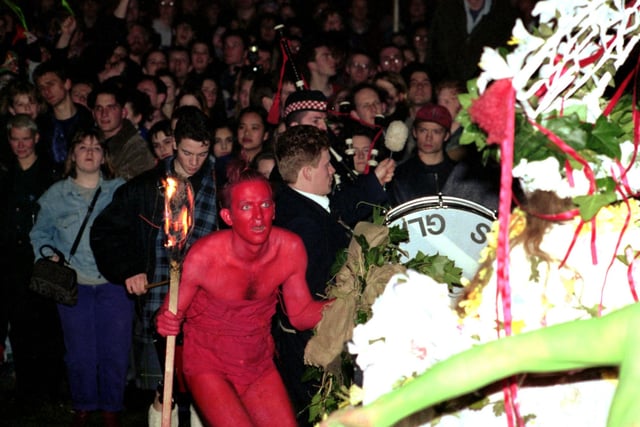The sky burns bright on Calton Hill the night before May Day, when thousands gather to take part in the Beltane fire festival.
The ancient Celtic celebration of fire, new life and purity, marking the end of the darker seasons and the arrival of summer on May Day, was revived for modern times in the Capital in 1988. And from small beginnings it has grown to be the largest celebration of its kind in the world.
The ritual, acted out by around 300 performers, sees the May Queen and the Green Man lead a procession of characters around the National Monument. The event tells the story of the transition from winter to summer, which can only happen when the Green Man, an archetypal figure in folklore all over the UK, dies and is reborn. He does so to shake off the last remnants of winter so that he can join the May Queen as her consort.
The festival had to be cancelled for two years because of Covid, so last year’s marked its return for the first time since 2019. Here, we look back over the years with pictures of festivals past.
The ritual, acted out by around 300 performers, sees the May Queen and the Green Man lead a procession of characters around the National Monument. The event tells the story of the transition from winter to summer, which can only happen when the Green Man, an archetypal figure in folklore all over the UK, dies and is reborn. He does so to shake off the last remnants of winter so that he can join the May Queen as her consort.

9. Festival 1998
The modern version of the Beltane festival started in Edinburgh in 1988 with a core of a dozen performers, but now there is a cast of around 300 taking part. The essential story remains the same, but it is adapted and interpreted anew each year. Photo: Julie Bull

10. Looking over Leith 2001
A view down on the lights of Leith from the top of Calton Hill during the 2001 Beltane fire festival. Photo: Paul Chappells

11. May Queen 2007
The May Queen and her White Warrior Women take part in the procession around Calton Hill at the 2007 Beltane fire festival. Photo: Julie Howden

12. Red Man 1992
A Red Man, one of the mischievous characters in the Beltane story, attempts to seduce the May Queen. Photo: Alistair Linford

